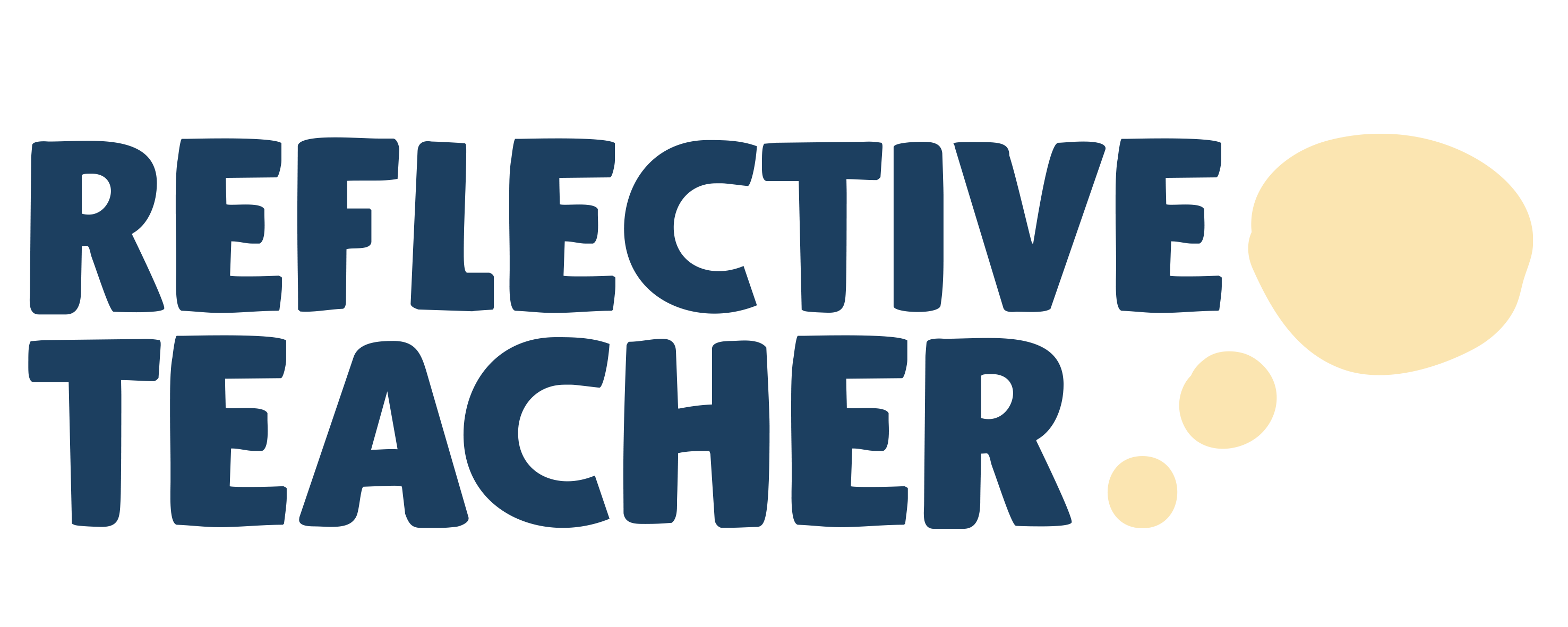As a teacher, the journey of growth is an ongoing and ever-evolving process. From classroom management to curriculum development, every aspect of our profession provides valuable lessons along the way. In this article, we will reflect on the lessons learned and share insights gained from our experiences as educators.
One of the key lessons we have learned is the importance of adaptability. In today’s ever-changing educational landscape, it’s essential to be flexible and open to new approaches. Whether it’s embracing innovative technology or adjusting teaching methods to cater to diverse student needs, being adaptable allows us to create a dynamic and engaging learning environment.
Another valuable lesson is the power of collaboration. Building strong relationships with colleagues, parents, and the wider educational community enhances our teaching practice. By sharing ideas, resources, and insights, we can continuously improve and provide quality education for our students.
Moreover, taking time for self-reflection is crucial for personal and professional growth. By evaluating our teaching strategies, assessing student outcomes, and seeking feedback, we can identify areas for improvement and make necessary adjustments.
Join us as we delve deeper into the lessons learned on this incredible journey of growth as a teacher. Together, we will celebrate successes, learn from challenges, and strive to enhance our impact in the lives of our students.
The importance of reflection in teaching
Teaching is not just about imparting knowledge; it’s also about continuous learning and growth. One of the key lessons we have learned is the importance of reflection. Taking the time to pause and reflect on our teaching practices allows us to evaluate our strengths and weaknesses, identify areas for improvement, and make necessary adjustments. Through reflection, we gain a deeper understanding of our students’ needs and tailor our instruction to meet those needs effectively.
Reflection also helps us develop a growth mindset, where we embrace challenges as opportunities for learning and view setbacks as stepping stones to success. By reflecting on our experiences, we become more self-aware, open to feedback, and willing to adapt our teaching methods to better serve our students. Ultimately, reflection empowers us to constantly refine our practice and become more effective educators.
Personal growth and professional development as a teacher
Teaching is not just a profession; it’s a journey of personal growth and professional development. Each day, we learn something new from our students, colleagues, and the educational community at large. By embracing a growth mindset and seeking opportunities for learning, we continuously improve our skills, knowledge, and pedagogical approaches.
Engaging in professional development activities, such as attending workshops, conferences, and webinars, allows us to stay updated on the latest research and best practices in education. It also provides us with a platform to network and collaborate with other educators, fostering a sense of community and shared learning.
Furthermore, personal growth is an integral part of being an effective teacher. As we reflect on our teaching experiences, we gain insights into our own strengths and weaknesses, enabling us to set personal goals and work towards self-improvement. By prioritizing our own growth, we model lifelong learning for our students and inspire them to embrace their own journeys of growth.
Challenges faced and lessons learned
One of the key challenges we face as teachers is meeting the individual needs of our students. Every student is unique, with different learning styles, abilities, and backgrounds. It is our responsibility to create inclusive and differentiated learning environments that cater to the diverse needs of our students. This requires us to be adaptable and flexible in our teaching approaches, utilizing a variety of instructional strategies and resources to ensure every student has the opportunity to succeed.
Another challenge we often face is maintaining student engagement and motivation. In today’s digital age, students are constantly bombarded with distractions and competing demands for their attention. As teachers, we must find innovative ways to capture their interest and make learning meaningful and relevant. Incorporating technology, hands-on activities, and real-world connections into our lessons can help foster engagement and ignite a love for learning.
Effective teaching strategies and techniques
In our journey as educators, we have discovered several effective teaching strategies and techniques that have had a positive impact on student learning. These strategies include:
1. Active learning: Encouraging students to actively participate in their learning through discussions, group work, and hands-on activities. This promotes critical thinking, problem-solving, and collaboration skills.
2. Differentiated instruction: Adapting our teaching to meet the diverse needs of our students. This involves modifying content, process, and product to ensure every student can access and engage with the curriculum.
3. Formative assessment: Using ongoing assessment techniques, such as quizzes, exit tickets, and observations, to gather feedback on student understanding and adjust instruction accordingly. This helps us identify areas where students may be struggling and provide timely interventions.
4. Project-based learning: Engaging students in extended, inquiry-based projects that allow them to explore real-world problems and develop essential skills such as research, communication, and critical thinking.
5. Collaborative learning: Encouraging students to work together in groups to solve problems, complete projects, and learn from each other. This promotes teamwork, communication, and empathy.
By incorporating these strategies into our teaching practice, we have seen increased student engagement, deeper understanding, and improved outcomes.
Building positive relationships with students and parents
Building positive relationships with our students and their parents is essential for creating a supportive and conducive learning environment. When students feel valued, respected, and understood, they are more likely to be engaged and motivated to learn. Similarly, when parents feel involved and informed about their child’s education, they become valuable partners in the learning process.
To build positive relationships, we strive to create a safe and inclusive classroom where every student feels heard and valued. We take the time to get to know our students individually, their interests, strengths, and challenges. This allows us to tailor our instruction and provide personalized support.
We also maintain open lines of communication with parents, keeping them informed about their child’s progress, strengths, and areas for improvement. Regular parent-teacher conferences, newsletters, and digital platforms provide opportunities for dialogue and collaboration.
The role of technology in teaching and learning
Technology has revolutionized the way we teach and learn. It has opened up new possibilities for engagement, collaboration, and creativity in the classroom. Integrating technology into our teaching practice allows us to meet students where they are, tap into their digital literacy skills, and prepare them for the digital world.
From interactive whiteboards and educational software to online learning platforms and virtual reality, technology offers a wide range of tools and resources that enhance teaching and learning. It enables us to create multimedia-rich lessons, provide personalized feedback, and facilitate global connections and collaborations.
However, it’s important to strike a balance and ensure technology is used purposefully and effectively. We must critically evaluate the educational value of the tools and platforms we use, consider accessibility and equity issues, and provide appropriate guidance and support for our students to navigate the digital landscape safely and responsibly.
Incorporating student feedback and assessment in the teaching process
Student feedback and assessment are crucial components of the teaching process. By actively involving students in assessing their own learning and providing feedback, we empower them to take ownership of their education and become self-directed learners.
One effective way to incorporate student feedback is through reflective journals or self-assessment activities. This allows students to reflect on their own learning, identify areas for improvement, and set goals for growth. Peer feedback and collaborative assessment also provide opportunities for students to learn from and support each other.
In addition to student feedback, regular formative and summative assessments help us gauge student understanding and progress. They provide valuable data that inform our instructional decisions and help us tailor our teaching to meet individual student needs. By utilizing a variety of assessment methods, such as quizzes, projects, and presentations, we can gather a comprehensive picture of student learning and adjust our teaching accordingly.

The impact of self-care and work-life balance on teaching
Teaching is a demanding profession that requires us to give our all to our students. However, it is essential that we prioritize self-care and maintain a healthy work-life balance to avoid burnout and ensure our long-term effectiveness as educators.
Self-care involves taking the time to nurture our physical, mental, and emotional well-being. This can include activities such as exercise, meditation, hobbies, and spending quality time with loved ones. By prioritizing self-care, we recharge our energy, reduce stress, and maintain a positive mindset, which ultimately enhances our ability to support our students effectively.
Work-life balance is also crucial for our overall well-being. It involves setting boundaries between work and personal life, allocating time for relaxation, and avoiding overworking. By establishing a healthy work-life balance, we create space for personal growth, pursue our own interests, and maintain healthy relationships outside of the classroom.
Conclusion: Embracing growth and continuing the journey as a teacher
In conclusion, the journey of growth as a teacher is a continuous and rewarding one. By reflecting on our experiences, embracing challenges, and seeking opportunities for learning, we can become more effective educators and make a positive impact on the lives of our students.
Through reflection, we gain valuable insights into our teaching practice, identify areas for improvement, and adapt our methods to meet the diverse needs of our students. Personal growth and professional development are integral to our success as teachers, as we continuously refine our skills, knowledge, and pedagogical approaches.
Challenges provide us with valuable lessons and opportunities for growth. By adopting effective teaching strategies, building positive relationships with students and parents, incorporating technology, and involving students in the assessment process, we create dynamic and engaging learning environments.
Furthermore, prioritizing self-care and maintaining a healthy work-life balance are essential for our well-being and long-term effectiveness as educators.
As we continue on this incredible journey of growth as teachers, let us celebrate our successes, learn from our challenges, and strive to enhance our impact in the lives of our students. Together, we can create a brighter future through education.
See how ReflectiveTeacher can help you, click here to start your free trial . https://app.reflectiveteacher.cloud/ords/r/education/reflectiveteacher-request-a-trial/request-a-trial



Comments are closed